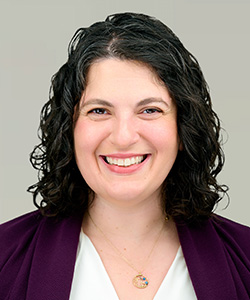This track will focus on recent innovations across the assay development and screening discipline, including the adoption of novel technologies and the implementation of effective, innovative screening campaigns and hit triage strategies. Attendees will learn about the development of robust, physiologically relevant biochemical, biophysical and cellular assays that are crucial for identifying novel biology, targets, and modalities that engage these targets. There will be an emphasis on recent case studies of cutting-edge assay, predictive, and perturbation approaches that have increased the success rates of target discovery and lead identification. The track will also highlight emerging approaches that have been coupled with next-generation therapeutic modalities and novel mechanisms of action to broaden the scope of target classes that can be drugged. Taken together, the overall track will highlight advances in the fields of assay development and screening that enhance efforts to identify, validate and characterize novel targets and potential lead molecules.
Session 1: Emerging Novel High Throughput Assays
Session Chair: Caitlin Mills, PhD, Harvard Medical School
High-throughput assays can take many forms. The aim of this session is to highlight novel assays that can be deployed in diverse biological contexts and have potential for widespread adoption beyond the labs where they were established.
Session 2: Screening Complex In Vitro Models
Session Chair: Talya Dayton, PhD, EMBL Barcelona
There have been many recent advances in the in vitro modelling of complex, multi-cellular systems leading to the need for more advanced high-throughput and high-content assays. This session will highlight innovative screening approaches for complex, multicellular in vitro models used in biomedical research for discovery and drug development.
Session 3: CRISPR Screens with High-Dimensional Readouts
Session Chair: John Doench, PhD, Broad Institute
Viability-based CRISPR screens are a mainstay in functional genomics, offering a scalable and straightforward approach to identify genes essential for cell growth or survival. However, the simplicity of the readout limits the types of biological questions that can be addressed. Many phenotypes of interest, such as changes in cell morphology, differentiation state, or transcriptional programs, are often invisible to this approach. This session will highlight cutting-edge strategies that couple CRISPR perturbations to high-content phenotyping, with a focus on imaging-based assays and single-cell RNA sequencing, unlocking new dimensions of cellular biology.
Session 4: Biochemical and Biophysical Proximity Assays
Session Chair: Mahmoud Amine Sadok, PhD, Amgen
Induced Proximity-based therapeutics rely on small molecules that bring a protein of interest to the vicinity of an effector promoting the formation of a ternary complex to achieve optimal target engagement and functional efficacy. This session will discuss the latest progress in biochemical and biophysical screening strategies to accelerate the discovery and optimization of Molecular Glue Degraders.
Session 5: Advanced Imaging and High Content Assays
Kaylene Simpson, PhD, Peter MacCallum Cancer Centre
Advances in high-content imaging continue to redefine how we interrogate cellular phenotypes, target biology, and compound activity. This session will showcase emerging strategies that integrate advanced imaging screens and computational approaches to drive chemical and biological discovery at scale.
Session 6: From Virtual Screening to Validation
Session Chair: John Moffat, PhD, Genentech
Advances in machine learning and AI are transforming our ability to predict cellular responses to genetic and chemical perturbations, unlocking new opportunities in target discovery, safety assessment and therapeutic design. This session will highlight cutting-edge methods for in silico screening, including AI-based modeling of cellular phenotypes, paired with experimental validation to accelerate biological insight.






